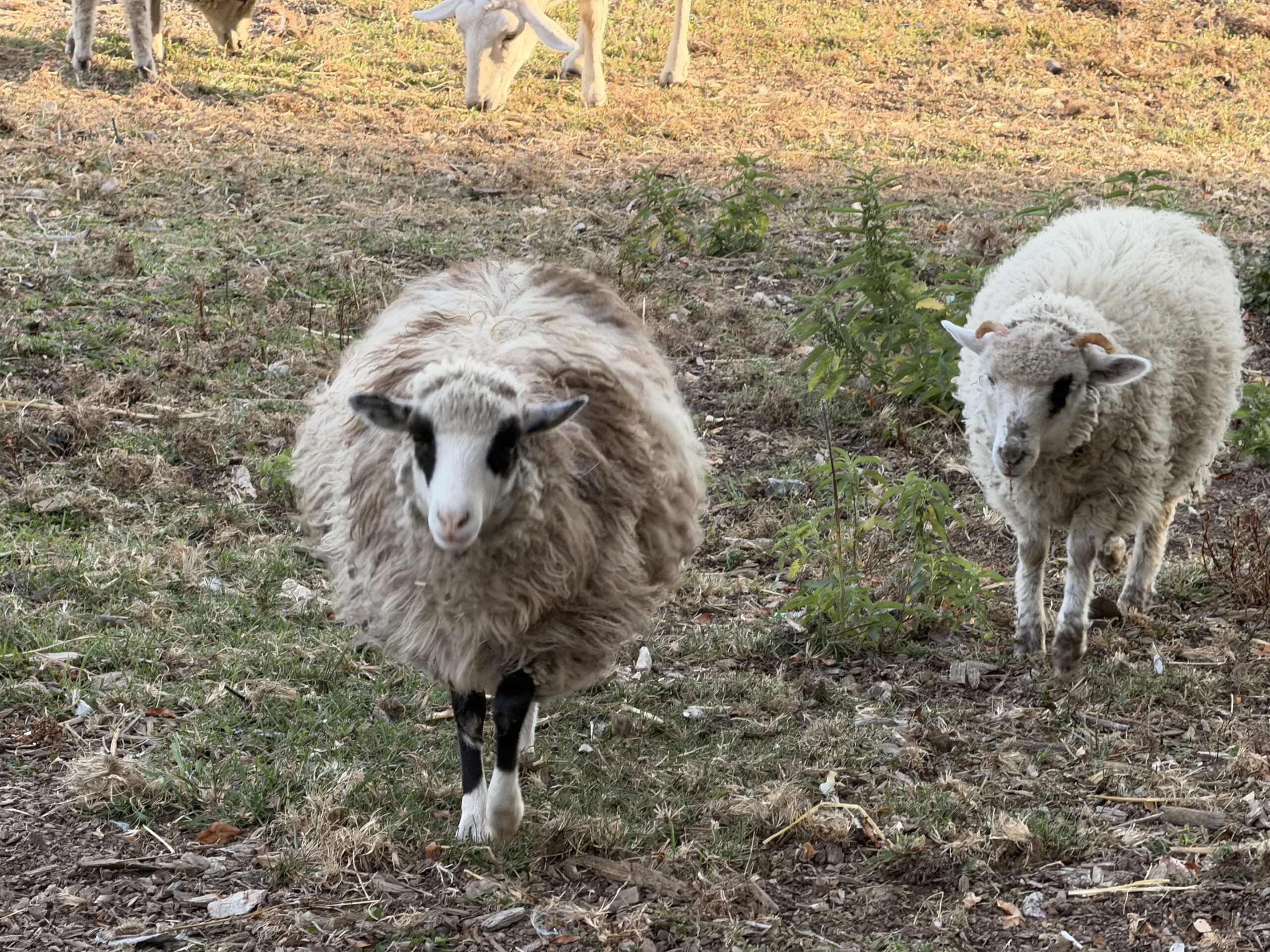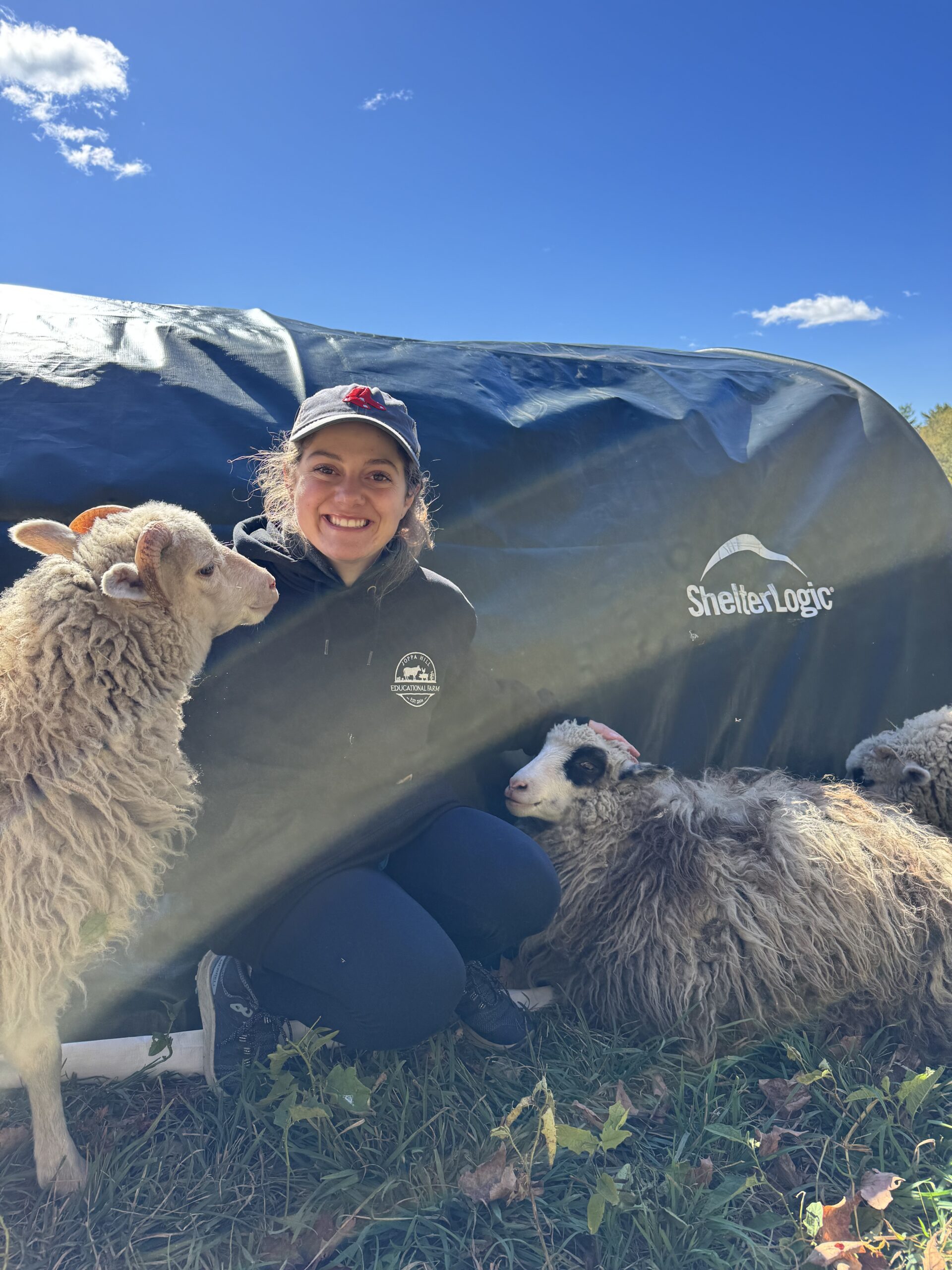Latest News
The New Lambs at Joppa Hill Educational Farm
So You Think You Want a Bunny?
We get calls all the time from people asking if we can take in their animals. Life changes happen — moves, new jobs, family needs — and while we always try to help, we can’t say yes to every request. Each animal that joins the farm has to be the right fit: friendly, easy to care for, and meaningful to our mission of agricultural education and livestock conservation. (And truthfully, we have more than enough chickens!)
Back in June, I received a heartfelt message from a woman named Jessica Quigley. She wrote about her small flock of lambs, describing their personalities, their care, and the difficult decision she was facing. I wasn’t sure we needed more sheep — but our current flock is mostly older and a bit standoffish — and Jessica’s note stuck with me.
When I arrived at Jessica’s homestead, I was immediately greeted by her lambs — not from a distance, but nose to knee, practically climbing into my lap. They leaned in for cheek scratches, nibbled at my sleeves, and looked up with curious eyes. They were clearly used to being loved. Jessica explained that her children had raised them with constant affection since birth, and it showed.


Then I learned about their breed — Santa Cruz Sheep, a very rare breed. Their story is as remarkable as they are. Originally brought to California’s Channel Islands in the 1800s, these sheep eventually became wild, surviving on their own for generations. Isolated on the island, they developed into a distinct breed — small, hardy, and incredibly resilient. Decades later, conservationists stepped in to save them from extinction. Today, Santa Cruz Sheep are still on the Livestock Conservancy’s Priority List, cared for by just a handful of dedicated breeders.
Jessica’s ewes had been accidentally bred with a Shetland ram, another ancient heritage breed known for its gentle nature and adaptability to rugged climates. The combination of Santa Cruz and Shetland produced lambs that are both tough and tender — a perfect match for our farm.
Jessica’s children loved these lambs deeply. They even sent me little biographies for each one. Lucy, named after Lucy Pevensie from Narnia, is the bold leader — always climbing, exploring, and stirring up mischief. Optimus, the gentle giant, “will stand quietly for as long as you need a hug,” they wrote.
Over the past few months, these lambs have become a joyful part of our farm family. They’ve joined our campers for storytime snuggles, nibbled weeds and brush, and brought out a new calm in our older flock. Even Belichick, our shyest sheep, now comes up for treats and a cautious nose scratch.
It’s amazing what a few new faces can do — for our animals, our visitors, and all of us who care for them. These lambs remind us why we do what we do: to connect people with animals, to protect heritage breeds, and to share stories that make the farm come alive.
If you’d like to learn more about these remarkable breeds, visit The Livestock Conservancy — or better yet, come meet our new lambs in person. They’d love to say hello.
